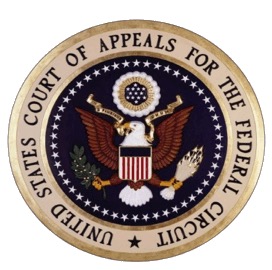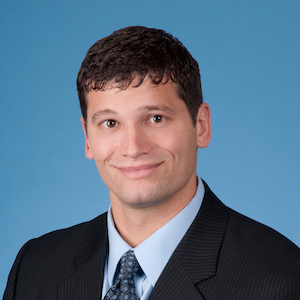A person will be considered a joint inventor with respect to an anticipating reference under 35 U.S.C. § 102(e) when the alleged joint inventor’s contributions to the portions of the anticipating reference relied on as prior art are significant enough when measured against the full anticipating disclosure.
 The Federal Circuit recently overturned a Patent Trial and Appeal Board (Board) inter partes review decision finding that an IPS Group (IPS) patent was not unpatentable as anticipated, holding that the Board erred when determining the inventive entities of the asserted IPS patent and the asserted prior art, which was a different IPS patent that shared an inventor with the other IPS patent. See Duncan Parking Techs. v. IPS Group, Inc., Nos. 2018-1205, 2018-1360, 2019 U.S. App. LEXIS 3137 (Fed. Cir. Jan. 31, 2019) (Before Lourie, Dyk, and Taranto, J.) (Opinion for the Court, Lourie, J.).
The Federal Circuit recently overturned a Patent Trial and Appeal Board (Board) inter partes review decision finding that an IPS Group (IPS) patent was not unpatentable as anticipated, holding that the Board erred when determining the inventive entities of the asserted IPS patent and the asserted prior art, which was a different IPS patent that shared an inventor with the other IPS patent. See Duncan Parking Techs. v. IPS Group, Inc., Nos. 2018-1205, 2018-1360, 2019 U.S. App. LEXIS 3137 (Fed. Cir. Jan. 31, 2019) (Before Lourie, Dyk, and Taranto, J.) (Opinion for the Court, Lourie, J.).
The claims at issue related to parking meter technology. IPS has two relevant patents for this technology, the ’310 patent and the ’054 patent. The ’054 patent issued in 2013 from a 2006 Patent Cooperation Treaty (PCT) application. It named the Founder of IPS, Dave King, and the Chief Technical Officer of IPS, Alexander Schwarz, as inventors. The ’310 patent was issued in 2010 and based on an application filed in 2008. The ’310 patent named King, along with three other engineers, as inventors. The ’310 patent, however, did not disclose Schwarz as an inventor.
IPS filed a complaint against Duncan Parking Technologies (DPT) asserting infringement of the ’054 and ’310 patents. The district court granted summary judgment to DPT on non-infringement for both the ’310 and ’054 patents. Further, DPT petitioned the Board for inter partes review of the ’310 patent. The Board instituted review of the ’310 patent on the ground that the ’054 patent anticipated the ’310 patent in light of 35 U.S.C. § 102(e).
Anticipation
A patent is anticipated under 35 U.S.C. § 102(e) if “the invention was described in . . . a patent granted on an application for patent by another filed in the United States before the invention by the applicant for patent.” If an invention is made jointly by two inventors, it cannot be considered the sole invention of either inventor individually.
On review, IPS argued that the relevant portions of the ’054 patent were solely King’s invention, not that “of another” under Section 102(e), and, therefore, the ’054 patent could not be used as prior art against the ’310 patent. In response, DPT argued that the ’054 patent was prior art because Schwarz conceived at least part of the ’054 patent’s relevant disclosure.
The Board held that, while Schwarz contributed to the creation of at least some of one figure in the ’054 patent, the Board was “skeptical that the general recitation in [the claims] . . . constitue[d] more than what Mr. King broadly envisioned.” Additionally, the Board found that DPT’s anticipation argument relied on content of the ’054 patent that was clearly outside anything associated with the figure Schwarz contributed to. The Board ultimately held that King was the sole inventor of the ’054 patent, and therefore ’054 did not anticipate the ’310 patent as to render it unpatentable. DPT appealed the Board’s inter partes review decision, and IPS appealed the district court’s summary judgment decisions on non-infringement.
DPT’s Appeal
DPT argued on appeal that Schwarz was a joint inventor of the relevant portions of the ’054 patent, and that accordingly, the ’310 patent was anticipated by the ’054 patent. In return, IPS argued that the figure conceived by Schwarz was not reflected in the ’310 patent claims at issue, so his contribution was irrelevant.
The Federal Circuit reversed the Board and sided with DPT, finding that the ’054 patent anticipated the challenged claims of the ’310 patent. Federal Circuit precedent held that the reference in Section 102(e) to “by another” means that “an application issued to the same inventive entity cannot qualify as § 102(e) prior art.” See, e.g. EmeraChem Holdings, LLC v. Volkswagen Grp. Of Am., Inc., 859 F.3d 1341, 1345 (Fed. Cir. 2017) (emphasis added).
To determine if the ’054 patent was “by another,” the Board must: (1) determine what portions of the ’054 patent were relied on as prior art to anticipate the ’310 patent, (2) evaluate the degree to which those portions were conceived “by another” (Schwarz), and (3) decide whether Schwarz’s contribution was significant enough, when measured against the full anticipating disclosure, to render him a joint inventor of the applied portions of the ’054 patent.
The Court concluded that the Board erred in not holding that King and Schwarz were joint inventors of the anticipating disclosure. The Court found that the ’310 patent, on its face, required components disclosed by the figure Schwarz conceived in the ’054 patent, and that Schwarz’s contributions to the ’054 patent were significant in light of the challenges faced in developing the technology due to how Schwarz’s contributions helped overcome some of those challenges. Therefore, the ’054 patent was invented by King and Schwarz jointly, which meant the ’054 patent had a different inventive entity from that of the ’310 patent and rendered the ’310 patent unpatentable as anticipated.
IPS’s Appeal
The Court affirmed the district court’s grant of summary judgment with respect to the ’310 patent, but vacated summary judgment of non-infringement on the ’054 patent. The Court took issue with the district court’s claim construction of “receivable within” with respect to the ’054 patent. The district court construed the term to mean “capable of being contained inside,” but when applied that construction as meaning “capable of being contained [entirely] inside.” The Federal Circuit held this narrow reading was narrower than the plain meaning of the term and was unsupported by the specification or prosecution history. Moreover, this narrow construction excluded the preferred embodiment of the ’054 patent. Accordingly, the Court vacated the grant of summary judgment with respect to the ’054 patent and remanded for further proceedings consistent with the Court’s revised claim construction.

![[IPWatchdog Logo]](https://ipwatchdog.com/wp-content/themes/IPWatchdog%20-%202023/assets/images/temp/logo-small@2x.png)


![[Advertisement]](https://ipwatchdog.com/wp-content/uploads/2024/04/Patent-Litigation-Masters-2024-sidebar-early-bird-ends-Apr-21-last-chance-700x500-1.jpg)

![[Advertisement]](https://ipwatchdog.com/wp-content/uploads/2021/12/WEBINAR-336-x-280-px.png)
![[Advertisement]](https://ipwatchdog.com/wp-content/uploads/2021/12/2021-Patent-Practice-on-Demand-recorded-Feb-2021-336-x-280.jpg)
![[Advertisement]](https://ipwatchdog.com/wp-content/uploads/2021/12/Ad-4-The-Invent-Patent-System™.png)







Join the Discussion
No comments yet.